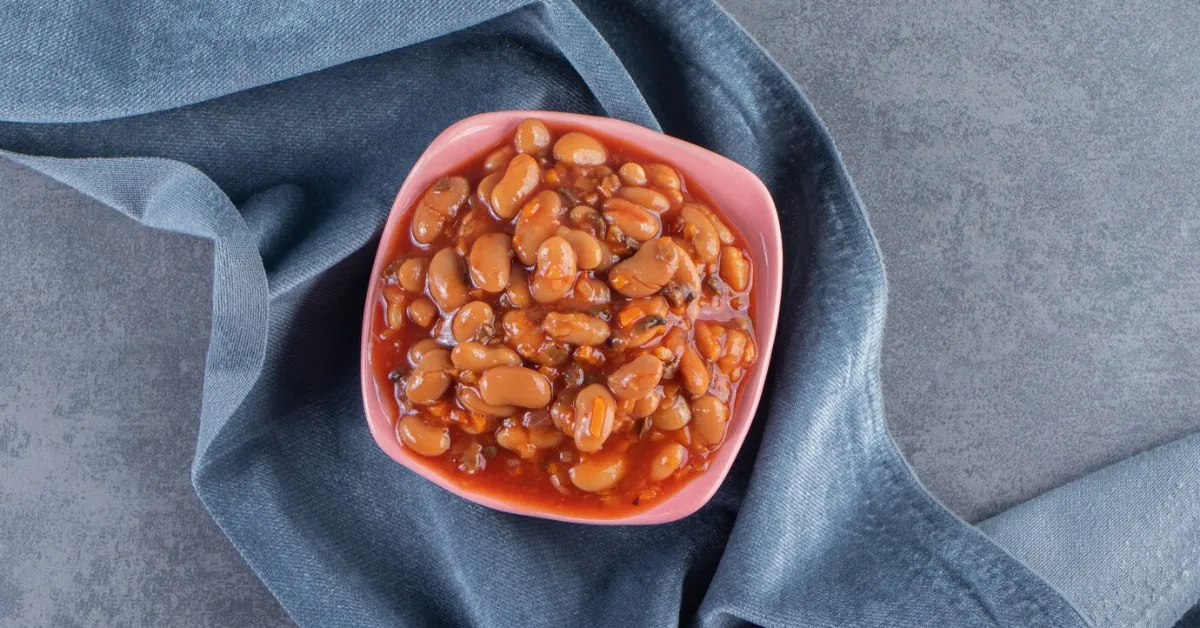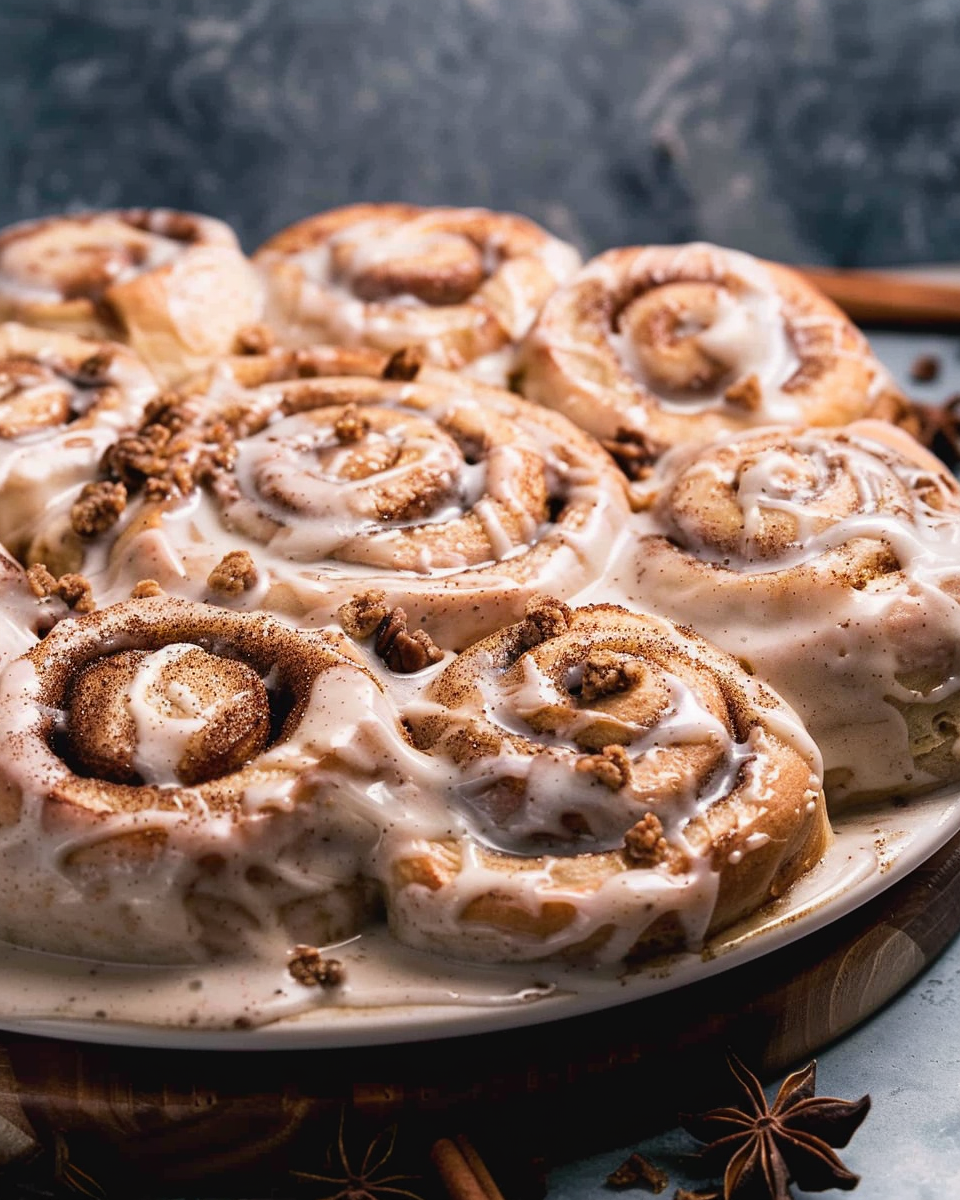Baked beans, a staple in many households, have a rich history that dates back centuries. Originating from Native American cuisine, these beans have traveled the world, adapting and evolving with every culture they touched.
History and Origin of Baked Beans
The Native Americans were the first to cook beans in a pot with maple syrup and bear fat. This method was later adopted by European settlers, who introduced their own twist by adding ingredients like molasses and pork.
Nutritional Benefits of Baked Beans
Baked beans are not just delicious; they’re a powerhouse of nutrition. Rich in protein, fiber, and essential minerals, they’re a heart-healthy choice that can boost energy and aid digestion.
Ingredients Needed for Baked Beans
Here’s a basic recipe for baked beans. This will serve as a starting point, and you can adjust the ingredients and quantities to suit your taste.
Beans:
- 500g (about 1 lb) dried navy beans or haricot beans (You can also use canned beans for a quicker version.)
Sauce:
- 1 large onion, finely chopped
- 2-3 cloves of garlic, minced
- 240ml (1 cup) tomato sauce or ketchup
- 120ml (1/2 cup) molasses or brown sugar (adjust to taste)
- 60ml (1/4 cup) apple cider vinegar
- 1 tablespoon Dijon mustard
- 1 teaspoon Worcestershire sauce
- 1 teaspoon smoked paprika (or regular paprika)
- 1/2 teaspoon ground black pepper
- 1/2 teaspoon salt (adjust to taste)
- 240ml (1 cup) water or vegetable broth (you might need more if the beans become too dry during baking)
Optional Ingredients:
- 120g (1/2 cup) bacon or salt pork, chopped (for added flavor)
- 1 bell pepper, chopped
- 1 teaspoon chili powder or cayenne pepper (for a kick)
- 1 tablespoon maple syrup (for added sweetness)
Step-by-Step Guide: How to Make Baked Beans?
- If using dried beans, soak them overnight in plenty of water. The next day, drain and rinse the beans.
- Preheat your oven to 160°C (325°F).
- In a large ovenproof pot or Dutch oven, if using bacon or salt pork, fry it until it’s slightly crispy. Remove excess fat if desired.
- Add the chopped onion (and bell pepper if using) to the pot and sauté until translucent. Add the minced garlic and sauté for another minute.
- Add the tomato sauce, molasses, apple cider vinegar, Dijon mustard, Worcestershire sauce, paprika, black pepper, salt, and any optional ingredients you’re using. Stir well to combine.
- Add the soaked beans to the pot and stir to coat them in the sauce. Pour in the water or vegetable broth until the beans are just covered.
- Cover the pot with a lid and place it in the oven. Bake for about 2-3 hours, checking occasionally to ensure the beans don’t dry out. If they seem dry, add more water or broth.
- The beans are done when they are tender and the sauce has thickened. Adjust seasoning if necessary.
Enjoy baked beans as a side or on toast!
Variations of Baked Beans
Baked beans are a classic dish that can be enjoyed in many variations. Here are some popular and delicious variations of baked beans from around the world:
Traditional Boston Baked Beans:
- Main Ingredients: Navy beans, molasses, pork or bacon, mustard, onion.
- Flavor Profile: Sweet and savory with a hint of smokiness.
Southern BBQ Baked Beans:
- Main Ingredients: Pinto beans or navy beans, barbecue sauce, ground beef or bacon, bell peppers, onions.
- Flavor Profile: Smoky, tangy, and sweet.
British-Style Baked Beans:
- Main Ingredients: Haricot beans, tomato sauce, sugar, vinegar.
- Flavor Profile: Tomatoey and slightly sweet. Often served on toast.
Vegetarian or Vegan Baked Beans:
Main Ingredients: Any preferred beans (like navy, pinto, or cannellini), tomato sauce or paste, maple syrup or brown sugar, smoked paprika.
Flavor Profile: Sweet, smoky, and tangy without the meat.
Mexican-Style Baked Beans:
- Main Ingredients: Pinto beans, chorizo, jalapeños, tomatoes, cumin, garlic.
- Flavor Profile: Spicy and savory with a hint of smokiness.
Italian-Style Baked Beans:
- Main Ingredients: Cannellini beans, tomatoes, garlic, rosemary, olive oil.
- Flavor Profile: Herbaceous and tomatoey with a hint of garlic.
French-Style Cassoulet:
- Main Ingredients: White beans, duck or lamb, pork sausage, breadcrumbs.
- Flavor Profile: Rich and meaty with a crispy breadcrumb topping.
Southwestern Baked Beans:
- Main Ingredients: Black beans or pinto beans, corn, green chilies, cumin, cilantro.
- Flavor Profile: Spicy and savory with a hint of freshness from the cilantro.
Hawaiian Baked Beans:
- Main Ingredients: Navy beans, pineapple chunks, ham or bacon, brown sugar, soy sauce.
- Flavor Profile: Sweet, tangy, and tropical.
Spicy Chipotle Baked Beans:
- Main Ingredients: Pinto beans or navy beans, chipotle in adobo, bell peppers, onions, garlic.
- Flavor Profile: Smoky and spicy with a deep chipotle flavor.
Maple and Bacon Baked Beans:
- Main Ingredients: Navy beans, maple syrup, bacon, mustard, onion.
- Flavor Profile: Sweet from the maple with a savory smokiness from the bacon.
Mediterranean Baked Beans:
- Main Ingredients: White beans, tomatoes, olives, capers, oregano, lemon zest.
- Flavor Profile: Bright, tangy, and briny with Mediterranean flavors.
You can customize these recipes based on your preferences, adding or omitting ingredients as you see fit. The key to a good baked bean dish is to balance the flavors and cook the beans until they’re tender and flavorful. You can discover also Grandma Browns Baked Beans Recipe. Enjoy experimenting with these variations!
Serving Suggestions of Baked Beans
Baked beans are a versatile dish that can be served in a variety of ways. Here are some serving suggestions for baked beans:
Traditional Side Dish:
- Serve baked beans as a side dish with grilled meats such as burgers, hot dogs, steaks, or chicken. A classic pairing is with barbecued ribs or pulled pork.
Bean and Cornbread:
- Serve baked beans with a side of cornbread. The sweetness of the cornbread complements the savory beans.
Wraps Of Bean:
- Use baked beans as a filling for wraps. Add salad greens, diced tomatoes, and a drizzle of your favorite sauce.
Bean Omelette:
- Add baked beans to an omelette along with cheese, bell peppers, and onions.
On Toast:
- Spread baked beans over toasted bread, sprinkle with grated cheese, and place under the broiler until the cheese is melted and bubbly.
Bean Salad:
- Mix cold baked beans with diced tomatoes, onions, bell peppers, and a tangy vinaigrette for a refreshing salad.
Bean Nachos:
- Spread tortilla chips on a baking tray, spoon over baked beans, sprinkle with cheese, and bake until the cheese is melted. Top with jalapeños, sour cream, and guacamole.
Breakfast Beans:
- Serve baked beans alongside scrambled eggs, bacon, and toast for a hearty breakfast.
Bean Tacos:
- Use baked beans as a filling for tacos. Add lettuce, cheese, salsa, and sour cream.
Beans and Rice:
- Mix baked beans with cooked rice for a simple and filling meal. Add some sautéed vegetables for extra flavor.
Bean Casserole:
- Mix baked beans with cooked pasta, diced vegetables, and cheese. Transfer to a baking dish and bake until bubbly.
Bean Soup:
- Thin out baked beans with some vegetable or chicken broth, add diced vegetables, and simmer until the flavors meld together.
Baked Potato Topping:
- Split open a baked potato and spoon over some baked beans. Top with sour cream, chives, and grated cheese.
Beans Sandwich:
- Spread baked beans between two slices of bread, add lettuce, tomato, and cheese for a unique sandwich.
Bean Pizza:
- Use baked beans as a topping for pizza. Add other toppings like bell peppers, onions, and cheese.
Bean Quesadilla:
- Spread baked beans between two tortillas, sprinkle with cheese, and cook on a skillet until crispy and golden.
Remember, baked beans can be seasoned and spiced in various ways, so feel free to experiment and adjust the flavors to your liking. Enjoy your meal!
Common Mistakes to Avoid When Making Baked Beans

Making baked beans might seem straightforward, but there are some pitfalls that can turn this delightful dish into a less-than-perfect experience. Here are some common mistakes to watch out for and how to avoid them:
Skipping the Soaking Process
- Why it’s a mistake: Beans that haven’t been soaked can take longer to cook and might not cook evenly.
- How to avoid: Always soak your beans overnight or use the quick-soak method by boiling them for a short time and then letting them sit for an hour.
Over-seasoning the Beans
- Why it’s a mistake: Too many spices or too much salt can overpower the natural flavor of the beans and the sauce.
- How to avoid: Start with a small amount of seasoning, taste as you go, and adjust accordingly.
Not Cooking Long Enough
- Why it’s a mistake: Beans that aren’t cooked long enough can be hard and unpleasant to eat.
- How to avoid: Ensure you cook the beans until they’re tender. This can vary depending on the type of bean and how they were prepared.
Using the Wrong Type of Beans
- Why it’s a mistake: Not all beans are suitable for baking. Some might become too mushy, while others might remain too firm.
- How to avoid: Stick to tried-and-true varieties like navy beans or pinto beans for the best results.
Adding All Ingredients at Once
- Why it’s a mistake: Some ingredients, like certain seasonings or acidic components, can affect how beans cook.
- How to avoid: Add ingredients in stages. For instance, acidic ingredients like tomatoes or vinegar should be added after the beans are tender.
Not Checking the Liquid Level During Baking
- Why it’s a mistake: Beans can dry out if there’s not enough liquid during the baking process.
- How to avoid: Periodically check the beans and add more liquid (water or broth) if they’re looking dry.
Remember, cooking is as much an art as it is a science. Even if you make a mistake, it’s all part of the learning process. With practice and by avoiding these common pitfalls, you’ll be on your way to making perfect baked beans every time!
Health Benefits
Baked beans, a beloved dish in many cultures, are not only delicious but also packed with numerous health benefits. However, like any food, they come with certain dietary considerations. Let’s delve into the advantages and things to keep in mind:
Rich in Protein
Benefit: Beans are a fantastic source of plant-based protein, essential for muscle building and repair. This makes baked beans especially beneficial for vegetarians and vegans looking for non-animal protein sources.
High in Dietary Fiber
Benefit: The fiber in beans aids in digestion, preventing constipation and promoting a healthy gut. Additionally, fiber can help lower cholesterol levels and stabilize blood sugar, reducing the risk of heart disease and type 2 diabetes.
Loaded with Essential Nutrients
Benefit: Baked beans are a good source of essential vitamins and minerals, including iron, magnesium, potassium, and B vitamins. These nutrients play vital roles in energy production, bone health, and blood pressure regulation.
Low in Fat
Benefit: Beans are naturally low in fat, making them a heart-healthy choice. When prepared without excessive added fats, baked beans can be a part of a balanced diet.
Dietary Considerations
Sodium Content:
Store-bought or canned baked beans can be high in salt. Consuming too much sodium can lead to high blood pressure and other cardiovascular issues. When making baked beans at home, control the salt content by adjusting to taste and using low-sodium ingredients.
Sugar Levels:
Traditional baked beans recipes often include molasses, brown sugar, or ketchup, which can increase the dish’s sugar content. If you’re watching your sugar intake, consider reducing the amount or looking for sugar-free alternatives.
Digestive Concerns:
Beans contain certain carbohydrates that some people find hard to digest, leading to gas or bloating. Soaking beans and discarding the soaking water can help reduce these effects. Additionally, introducing beans gradually into your diet can allow your digestive system to adjust.
Caloric Content:
While beans are nutritious, adding ingredients like bacon, sausage, or excessive sugar can increase the calorie count. Be mindful of additions if you’re watching your calorie intake.
In summary, baked beans offer a plethora of health benefits, making them a worthy addition to any diet. However, being aware of the dietary considerations ensures you enjoy this dish in the healthiest way possible. Whether you’re enjoying them as a main dish or a side, baked beans can be both tasty and nutritious when prepared thoughtfully.
FAQs
Are baked beans vegan?
Most store-bought baked beans contain animal products like pork. However, there are vegan versions available, and you can make homemade baked beans vegan by omitting meat and using plant-based ingredients.
Can I eat beans every day?
Yes, beans are nutritious and can be eaten daily. They’re rich in protein, fiber, and essential nutrients. However, if you’re not used to them, introduce gradually to avoid digestive discomfort.
How are beans processed?
Beans are harvested, cleaned, and sometimes dried. They can be sold whole, split, or ground. Canned beans are cooked and preserved in liquid. Always rinse canned beans to reduce sodium.
What do you eat with baked beans?
Baked beans pair well with various dishes like grilled meats, cornbread, coleslaw, and salads. They’re popular at BBQs and can also be enjoyed on toast for a quick meal.
Are baked beans healthy?
Baked beans are nutritious, offering protein, fiber, and vitamins. However, store-bought versions can be high in sugar and salt. For a healthier option, make them at home and control the ingredients.
Conclusion
Baked beans, with their rich history and versatility, are a delightful addition to any meal. Whether you prefer them sweet, spicy, or smoky, there’s a variation out there for everyone. So the next time you’re pondering over what to cook, remember this guide on how to make baked beans and treat yourself to a hearty, nutritious dish.









